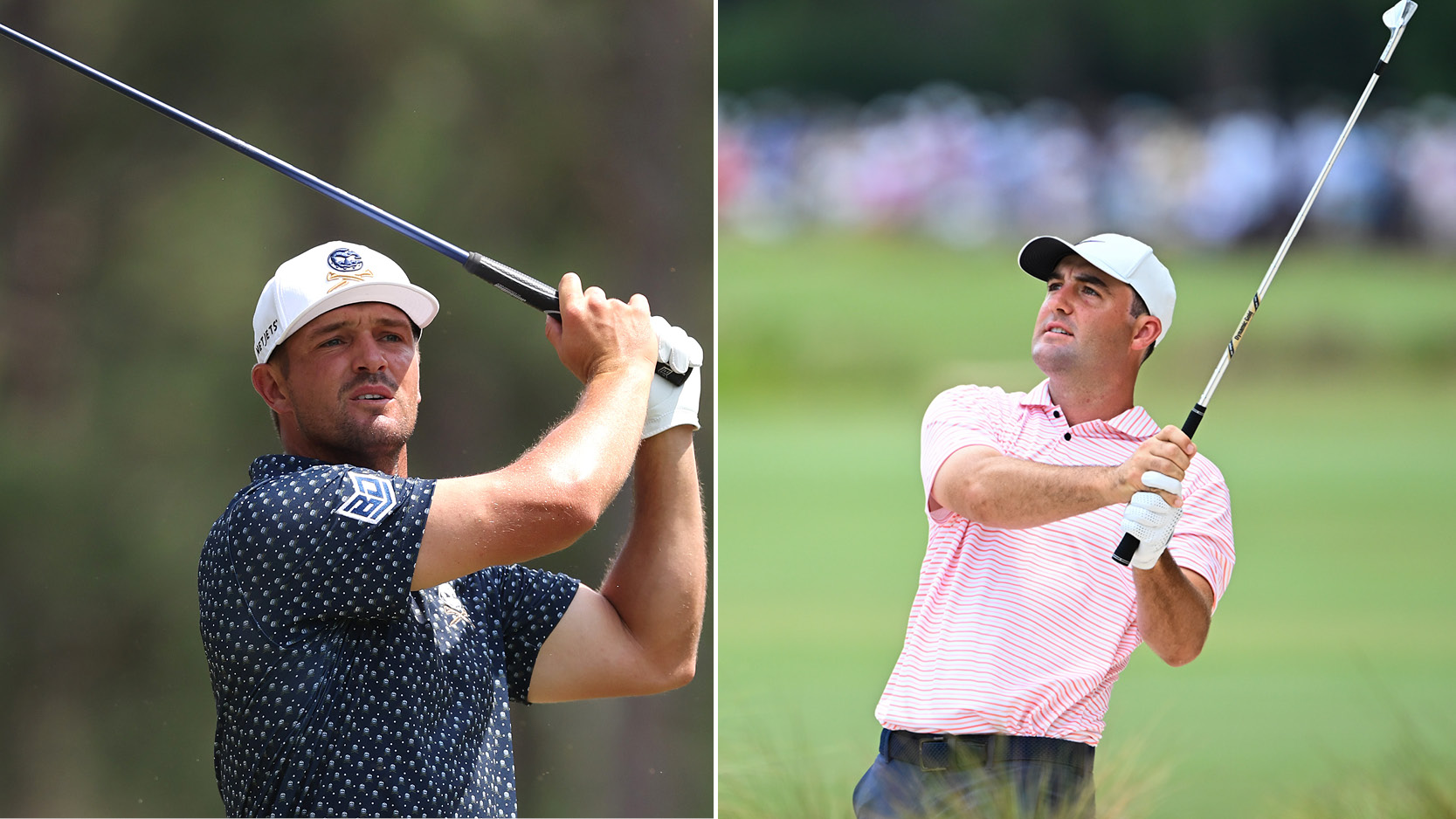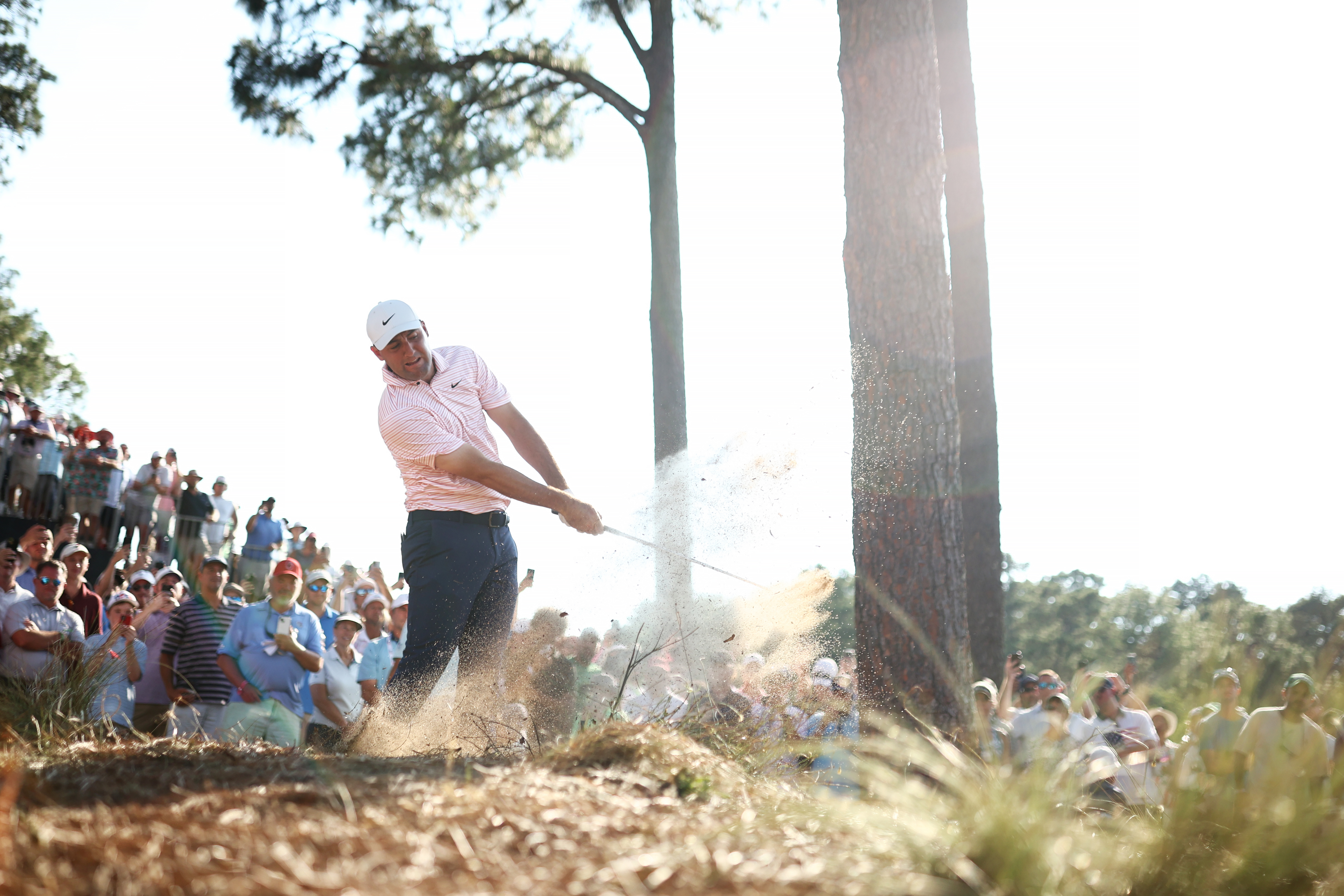
There's no denying that players will try and use the Rules of Golf to their advantage, with bizarre and interesting incidents involving the rules seemingly being thrown up every week on the professional circuit.
At the US Open on Thursday, that's exactly what transpired, as two of the world's best, Bryson DeChambeau and Scottie Scheffler, were involved in identical rules' incidents just minutes apart.
Coming into the week, Scheffler was listed as the favorite to pick up a third Major title at Pinehurst No.2, whilst DeChambeau was also listed amongst those who could challenge in North Carolina.
Starting with DeChambeau's incident, the American found himself three-under for his round as he came to the par 5 fifth, his 14th hole of the day. Throughout Thursday, the 30-year-old had missed just one fairway but, as he looked for another birdie, DeChambeau carved his tee shot right and into the trees.
It seemed that a bogey was on the cards for the former US Open winner but, in a huge slice of luck, the LIV Golfer was able to get free relief due to a pylon being in his way. Why was he granted relief, you may ask? Well, it was due to the ruling 'Temporary Immovable Obstructions (MLR F-23)'.
Bryson DeChambeau just got a drop from the 6 inch wide TV tower which gave him a clear shot, he then hit the green from 244. Use the rules to your advantage 😉 @FinlayPacks pic.twitter.com/tsUriaVSNSJune 13, 2024
The 'Definition of TIO: A temporary immovable obstruction (TIO)' is "a structure that is temporarily placed on or next to the course, usually for a particular competition, and is fixed or does not meet the definition of movable obstruction. Examples of TIOs are temporary tents, scoreboards, grandstands, television towers and toilets.
"TIOs include any supporting guy wires connected to them, except when the Committee decides the supporting guy wires are to be treated as immovable obstructions or as temporary elevated lines or cables using Model Local Rule F-22.
"The outermost edge of the TIO is used in determining whether a ball is under the TIO or whether the TIO is on the player’s line of sight between the ball and the hole. Lines or stakes may be used to define the edges of a TIO or to connect multiple TIOs into a single, larger TIO".
Essentially, because the temporary immovable obstruction was in the line of sight of DeChambeau, he was granted free relief, no nearer the hole, with the American able to take a fortunate drop that eventually led to a birdie, something which would have been unlikely if he hadn't got free relief.

So, what about Scheffler? Well, the tournament favorite was struggling on his Thursday, sitting one-over-par through 15 holes. Playing the treacherous 16th, the World No.1 pulled his tee shot left and, after it came to rest on the hardpan, he too was able to get relief in exactly the same way as DeChambeau.
According to the broadcast, Scheffler's line of sight was impeded by a Rolex clock, with the 27-year-old able to take a drop that opened the angle slightly more to the green. However, despite having an easier shot, it was still nigh-on impossible to hit the putting surface, as the American made a bogey to drop to two-over for his round.
It's unclear as to how much impact the luck will have on the end result but, sometimes, it pays to know the rules...







